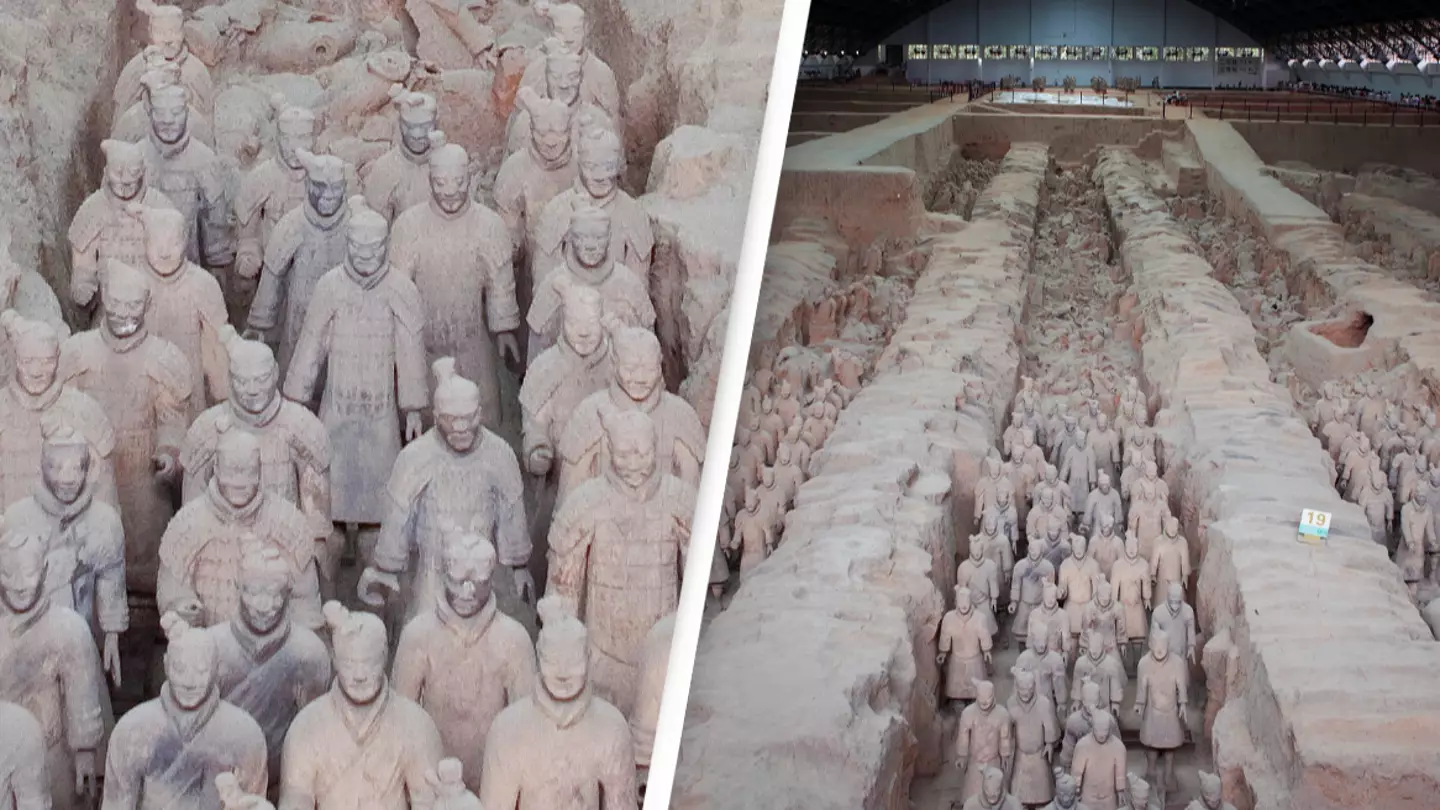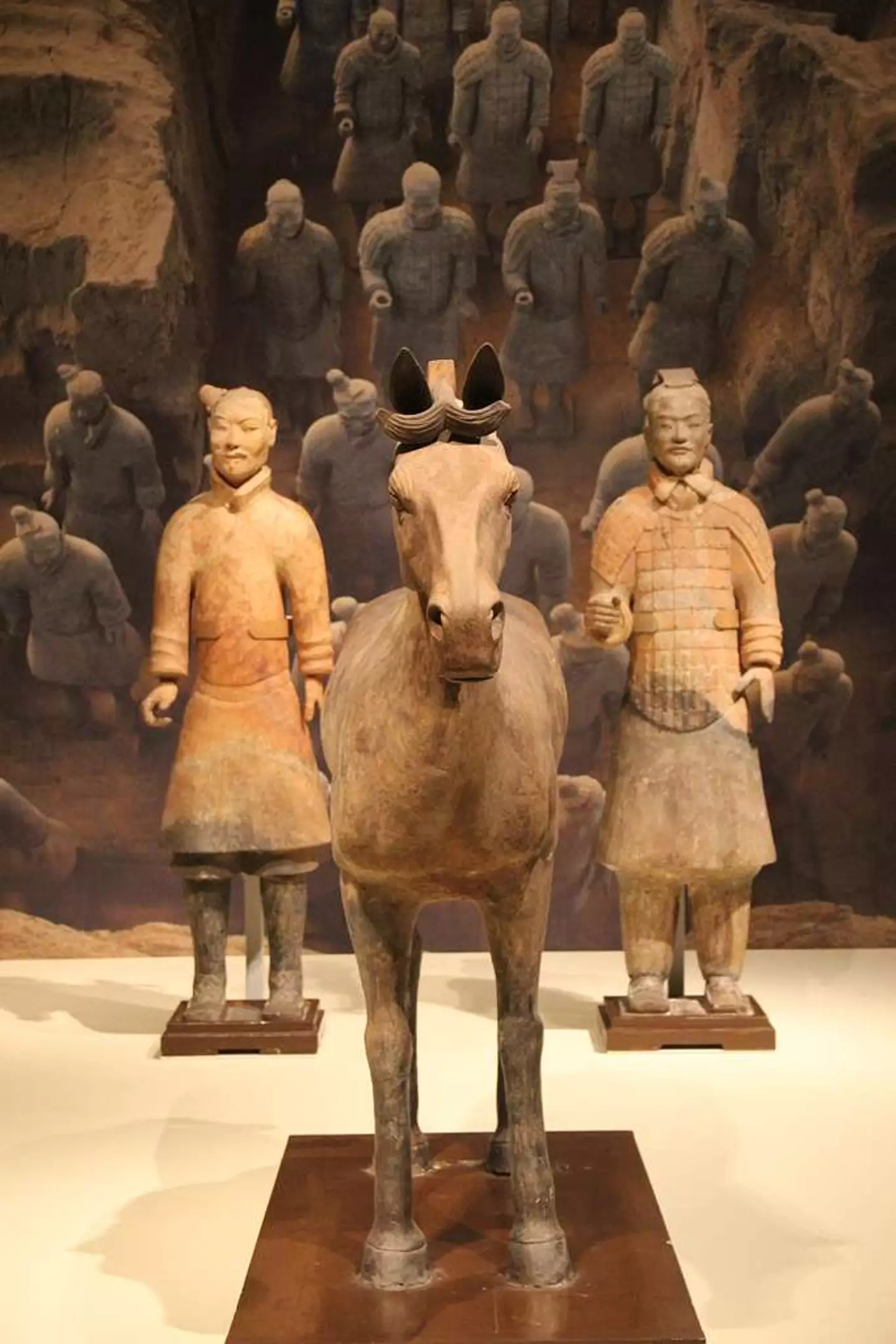
Archaeologists are scared of opening up and taking a look inside the tomb of China's first emperor.
The tomb complex of Qin Xi Huang is famous the world over and is one of the most important archaeological discoveries, well, ever.
If you've ever heard about a terracotta warrior, or the Terracotta Army, that is from the enormous tomb complex of the man generally acknowledged to have been China's first emperor, who reigned from 221 BC to 210 BC
Advert
Hundreds of figures were found inside the tomb complex, including famously lots of soldiers, but also people from around the court who would accompany the emperor in death.
However, one chamber in the enormous complex still remains unopened.

It is, of course, the most important chamber of all and is the one containing the tomb and sarcophagus of the emperor himself.
Advert
There are a number of reasons why archaeologists are delaying opening the tomb, and they are very good reasons.
And no, before you ask, it's got nothing to do with curses.
In fact, it's not so much concern about what could get out of the chamber, as what could get in.
When archaeologists first excavated the complex, the figures found there were painted in rich colours - they weren't the plain terracotta figures we are familiar with today.
Advert
However, the very sudden change in the atmosphere meant that paint on the figures began to peel off, and now most are completely bare.
There is a concern that opening the imperial chamber could have the same effect on anything in there.
Another reason is that authorities are waiting for further advancement in archaeological science and technology which would allow us to gain as much insight as possible, or even preserve the chamber, before opening it.

Kristin Romey, a curatorial consultant for the Terracotta Warrior exhibition at New York City’s Discovery Times Square, told Live Science: "The big hill, where the emperor is buried — nobody's been in there.
Advert
"Partly it's out of respect for the elders, but they also realize that nobody in the world right now has the technology to properly go in and excavate it."
There is also a big political question over the excavation of the site.
This is a site which provides a direct connection to the beginning of China as we know it. For a country with such a strong sense of its own identity and history, that's a pretty enormous deal, and not something that you want to be treating lightly.
For now though, the emperor is being allowed to continue his repose, as he has done for the last 2,000 years.
Topics: News, World News, China
